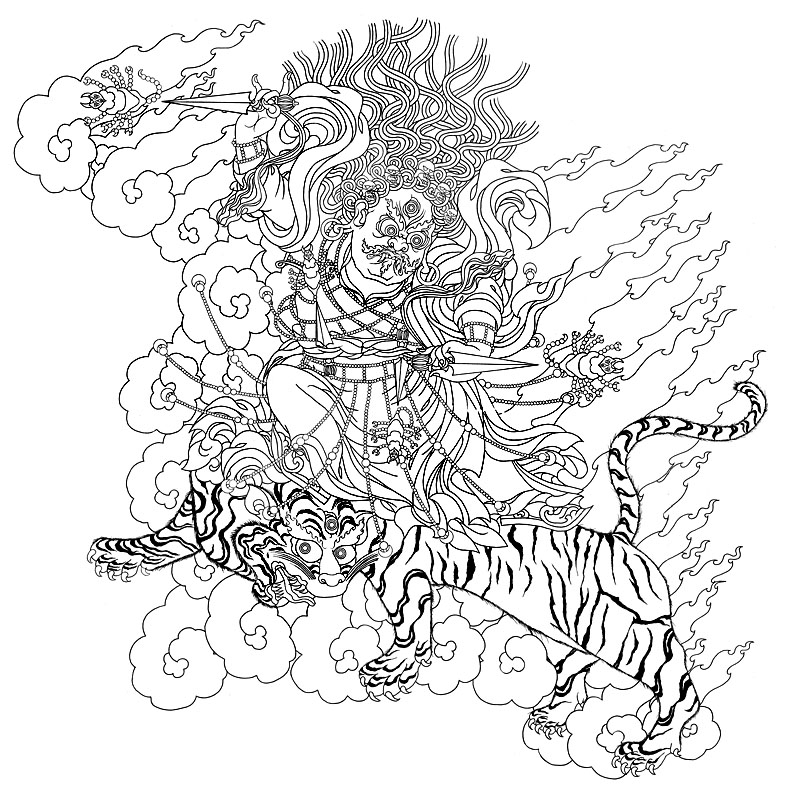
Dorje Tröllö
The Aro gTér expression of yeshé ’cholba
Dorje Tröllö (rDo rJe bLo dPon rDo rJe Gro lod) is his primary wisdom appearance in the Aro gTér cycle of yidams. There are nine forms of Dorje Tröllö within the Aro gTér including the form shown here, and Tsogyel Tröllö.
Khandro Déchen points out:
Like the
Khordong gTér Dorje Tröllö, this one has a five skull crown and upward flying hair, but he faces to the left – as does the Düd’jom gTér Dorje Tröllö. The Aro gTér Dorje Tröllö rides a
tigress which is larger than the usual mount, because she is the powerful
sangyum Tashi Chhi’drèn and therefore shown in dynamic upward leaping form. Unlike the Khordong gTér Dorje Tröllö and the
Düd’jom gTér Dorje Tröllö, the Aro gTér Dorje
Tröllö carries four phurbas—two in his waist sash and one in each hand—which
destroy the four philosophical extremes of monism, dualism, nihilism, and
eternalism. The tigress possesses a wisdom eye on her forehead in display of the
fact that she is also a yidam. This is a characteristic of the Aro gTér and the
third wisdom eye can be found on every animal which acts as a mount for the
major yidam.
Dorje Tröllö is the Wisdom-chaos manifestation of Padmasambhava – the Second Buddha. Wisdom-chaos (yeshé ’cholwa – ye shes ’chol ba) is the style of non-dual activity, which cuts through dualistic manipulations in their most subtle forms.
Ngak’chang Rinpoche comments: When self-oriented spiritual conceit attempts to appropriate spiritual involvement as
part of its manipulative strategy, the yeshé ’cholwa Lama encourages the
disciple to increase the volume of his or her neurosis until it implodes. The
yeshé ’cholwa Lama often destroys conventional spiritual reference points in
order to move the disciple beyond fixed habit patterns. The tigress displays
unrestrained ferocity. The tigress purveys the terror of the unknown and
unknowable. She is ruthlessly playful and playfully ruthless – she is the ground
experience of yeshé ’cholwa. Yeshé ’cholwa is not easily understood in the West
even by those who espouse Vajrayana Buddhism. There are few people who are
actually open to forgoing emotional anæsthetic in respect of the advice and
guidance of a Lama. There is often great interest in Dorje Tröllö and yeshé
’cholwa – but the pragmatics of ‘wisdom gone wild’ often offend the aspect of
narcissism which likes to hide behind logic and mundane reasonability. As long
as the Lama is subject to the tyranny of logical analysis and coherent
accountability – yeshé cholwa is non-functional.
